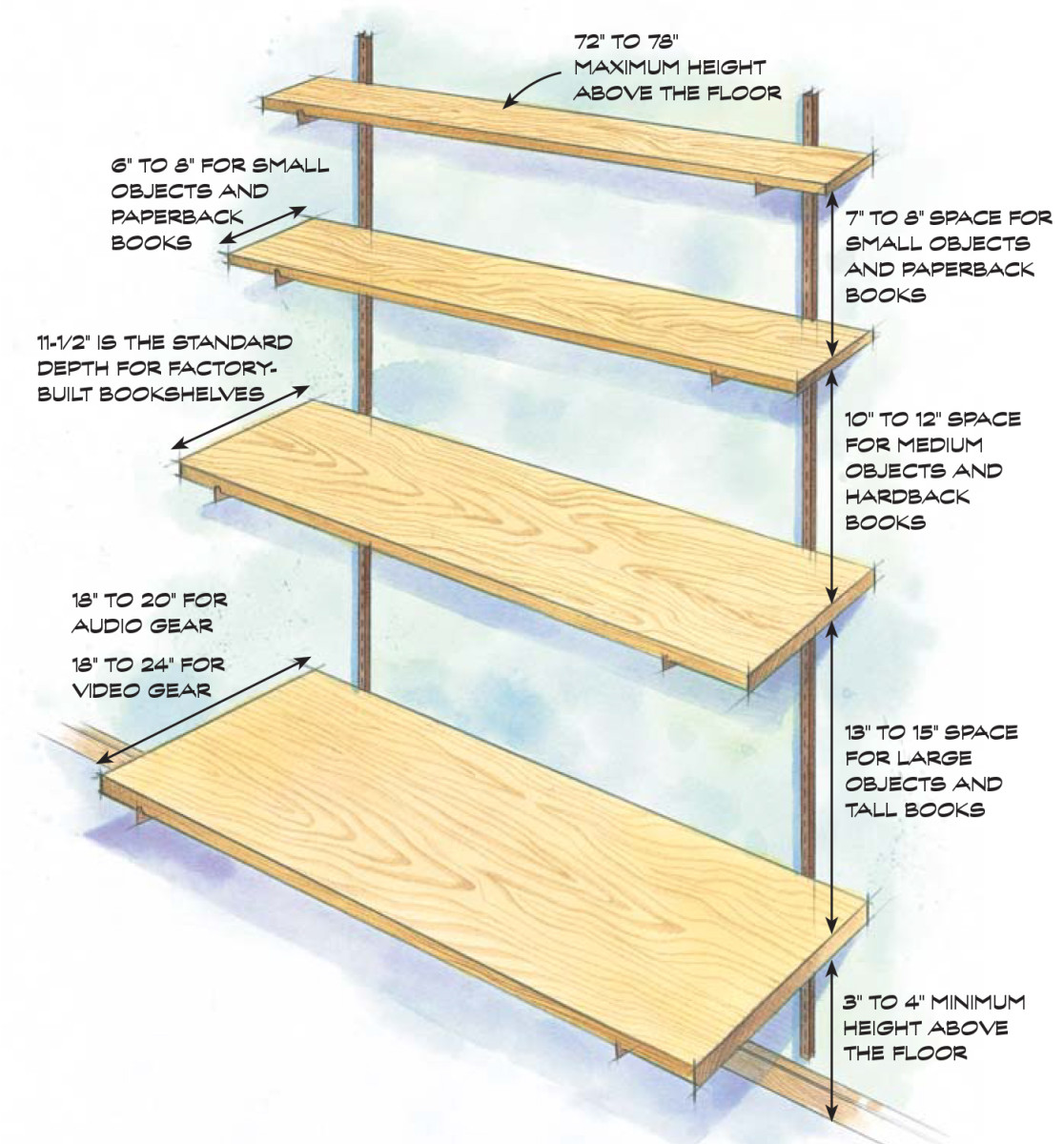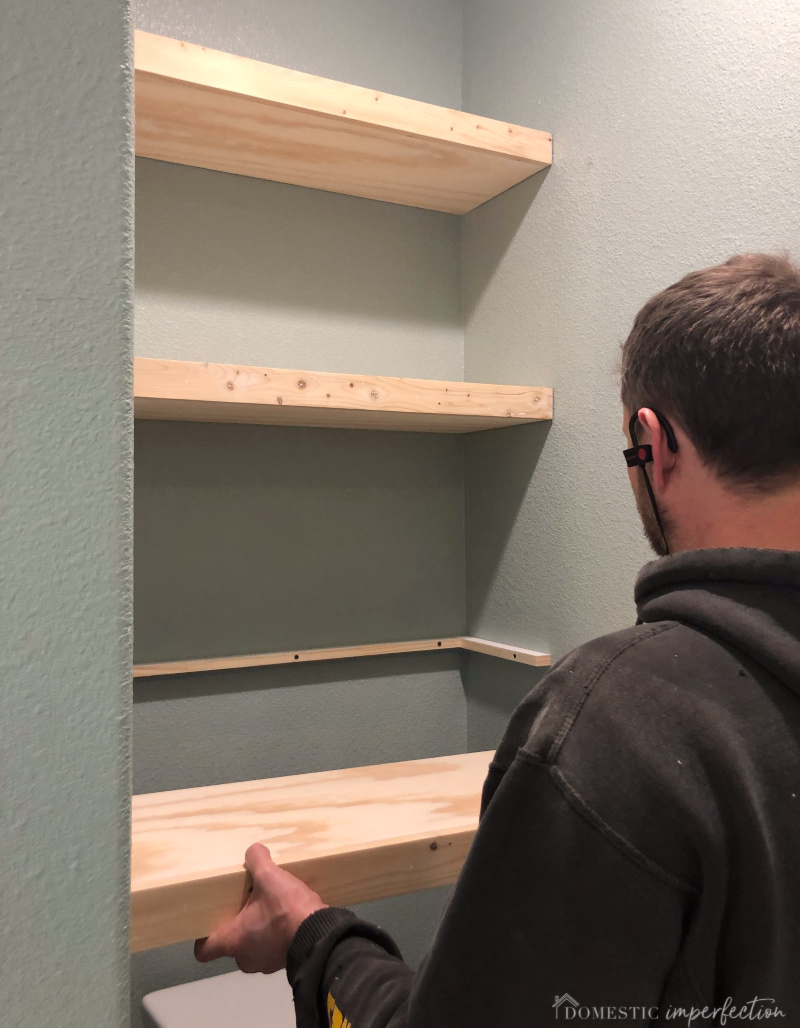Are you wondering how thick plywood should be for shelves? Well, you’ve come to the right place! Choosing the right thickness of plywood is crucial for ensuring sturdy and durable shelves that can hold your belongings without sagging or bending. So, let’s dive into this topic and discover the optimal plywood thickness for shelves.
When it comes to selecting plywood for shelves, there are a few factors to consider. The thickness of the plywood plays a significant role in determining the strength and stability of your shelves. Thicker plywood tends to be stronger and less prone to sagging, making it a suitable choice for heavy items or long spans between supports.
The required thickness of plywood for shelves depends on the intended use and the weight you plan to place on them. Let’s explore different thickness options and their ideal applications, so you can make an informed decision for your shelves. So, shall we get started?

How Thick Plywood for Shelves? Choosing the Right Thickness for Sturdy and Functional Shelves
Plywood is a versatile material that is commonly used for shelves due to its strength and durability. However, choosing the right thickness of plywood is crucial to ensure that your shelves can bear the weight of your items without sagging or collapsing. In this article, we will explore the factors to consider when determining how thick plywood you should use for shelves.
1. Understanding Plywood Grades and Their Impact on Shelf Strength
Plywood comes in different grades, ranging from A to D, with A being the highest quality. The grade of plywood affects its strength and appearance, which in turn can impact the thickness required for shelves. For general purpose shelves, a C-grade plywood is typically sufficient, as it offers good strength and a reasonable price point.
In terms of thickness, a ¾-inch thick plywood is commonly used for most shelf applications. This thickness provides ample support for books, small appliances, and other commonly stored items. However, if you plan to store heavier items such as power tools or heavy kitchen appliances, you should consider using a thicker plywood, such as 1 inch or even 1 ¼ inch, for added strength and stability.
2. Considering the Length and Span of Your Shelves
The length and span of your shelves also play a crucial role in determining the required thickness of plywood. Longer shelves or shelves with a larger span will experience more weight distribution and may require additional support. To prevent sagging or bowing in such cases, it is advisable to use thicker plywood or add additional supports such as brackets or vertical dividers.
If you have adjustable shelves, you should also take into account the number of supports and the spacing between them. Adding extra supports or reducing the spacing can increase the overall strength of the shelf system and allow for the use of thinner plywood. On the other hand, if you have fixed shelves, it is generally recommended to opt for thicker plywood to ensure long-term stability.
3. Considering Load Capacity and Usage of the Shelves
The intended load capacity and usage of the shelves are important factors to consider when determining the thickness of plywood. For lightweight items and decorative shelving, a thinner plywood may be sufficient. However, if you plan to store heavy items such as tools, canned goods, or appliances, it is advisable to choose a thicker plywood to ensure the durability and safety of the shelving system.
Additionally, the frequency of use and the overall longevity of the shelves should be taken into account. If the shelves are intended for long-term use and will be subjected to frequent loading and unloading, thicker plywood should be used to withstand the wear and tear over time.
4. Additional Tips for Choosing Plywood for Shelves
– Consider the aesthetics: In addition to functionality, consider the appearance of the plywood. If you plan to leave the edges exposed, opt for a plywood with a nice grain pattern or choose a higher grade, such as A or B, for a smoother and more visually appealing surface.
– Take humidity and moisture into account: If your shelves will be exposed to high humidity or moisture, such as in a bathroom or a basement, consider using moisture-resistant plywood or applying a sealant to protect against potential damage.
– Seek professional advice if unsure: If you are uncertain about the appropriate thickness of plywood for your specific shelving needs, consult with a professional carpenter or seek advice from an experienced salesperson at a lumber yard.
By understanding the factors that influence the required thickness of plywood for shelves, you can make an informed decision that ensures sturdy and functional storage solutions. Remember to prioritize the load capacity, span, and usage of the shelves to determine the appropriate thickness.
Key Takeaways: How Thick Plywood for Shelves?
- 1. The thickness of plywood for shelves depends on the weight the shelves will hold.
- 2. For light to medium loads, 1/2 inch or 3/4 inch thick plywood is suitable.
- 3. If you plan to store heavy items or want to make wider shelves, go for 3/4 inch or thicker plywood.
- 4. Remember to consider the spacing between supports to avoid sagging.
- 5. Always check the manufacturer’s recommendations and consult with professionals if unsure.
Frequently Asked Questions
Are you wondering about the ideal thickness of plywood for your shelves? Look no further! We’ve compiled a list of common questions to help guide you in this process. Read on to find answers to your queries and make an informed decision for your shelving project.
1. What thickness of plywood should I use for my shelves?
When it comes to selecting the right thickness for your shelves, there are a few factors to consider. For typical household shelves, plywood with a thickness of 3/4 inch (or 19mm) is commonly used. This thickness provides ample support and durability for holding various items like books, dishes, or small appliances. However, if you plan on storing heavier objects or need more strength, you may opt for thicker plywood, such as 1 inch (25mm) or even 1 1/8 inch (28mm).
Keep in mind that thicker plywood can increase the weight and cost of your project, so it’s essential to strike a balance between strength and practicality for your specific needs.
2. Can I use a thinner plywood thickness for lightweight shelving?
If your shelving needs are relatively light, you may use thinner plywood. For lightweight items like clothing, crafts, or decorative pieces, 1/2 inch (or 13mm) plywood can be sufficient. However, it’s still important to ensure that the shelves are properly mounted and supported to prevent any sagging or potential structural issues. If in doubt, consider adding additional support through brackets or reinforcements to maintain the integrity of the shelves.
Remember, while thinner plywood may be suitable for lightweight applications, it’s always wise to consider possible future uses or potential heavier items that may require sturdier shelves.
3. What are the advantages of using thicker plywood for shelves?
Opting for thicker plywood can offer several advantages when it comes to shelving. Firstly, thicker plywood provides increased strength and durability, allowing you to store heavier items without worrying about sagging or buckling. Additionally, it offers better resistance to warping or bending over time, ensuring the longevity of your shelving unit.
By using thicker plywood, you also have the flexibility to modify or repurpose your shelves in the future. The added thickness provides a sturdier base that can accommodate changes in your storage needs or withstand potential alterations to the shelving structure.
4. Are there any downsides to using thicker plywood for shelves?
While thicker plywood has its advantages, there are a few considerations to keep in mind. One primary factor is the increased weight that comes with thicker plywood, which can make installation and handling more challenging. Additionally, thicker plywood tends to be more expensive compared to thinner options, potentially impacting your budget for the project.
Moreover, using thicker plywood may limit the number of shelves you can create, particularly if you have limited vertical space. Thicker shelves can reduce the available height between shelves, meaning you’ll have fewer storage levels overall. Consider the amount of vertical space you have and how it aligns with your shelving requirements before opting for a thicker plywood.
5. Can I use plywood of different thicknesses for my shelves?
Yes, you can use plywood of different thicknesses for your shelves, depending on your specific storage needs. This technique is particularly useful when you require varying levels of strength and support. Using different thicknesses can also provide aesthetic variety, creating an interesting visual element in your shelving unit.
When combining plywood of different thicknesses, ensure that you appropriately account for the variations, maintaining stability and alignment. Carefully plan and design your shelving unit to accommodate the different thicknesses, ensuring each shelf is properly supported. Taking these precautions will help create a functional and visually appealing shelving system using plywood of multiple thicknesses.

5 Mistakes Buying Plywood – Don’t Waste Your Money!
Summary
When choosing plywood for shelves, you need to consider the thickness and the weight it can support. Thicker plywood, like 3/4-inch or 1 inch, can handle heavier items and won’t sag over time. If you only plan to store lightweight items, 1/2-inch plywood can be sufficient.
Also, remember to take into account the size of the shelf and the distance between the support brackets. The longer the shelf, the more likely it is to sag, so thicker plywood may be necessary. Always check the weight limits provided by the manufacturer to ensure your shelves are safe and sturdy.
In conclusion, choose a plywood thickness that matches the weight and size of the items you plan to store, and pay attention to the manufacturer’s weight limits for a reliable and durable shelving solution.
